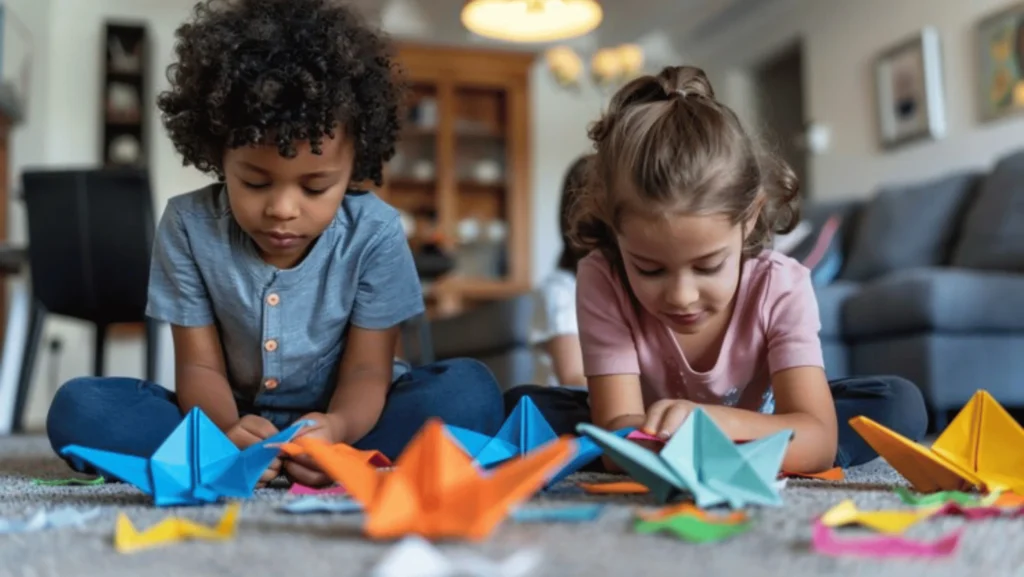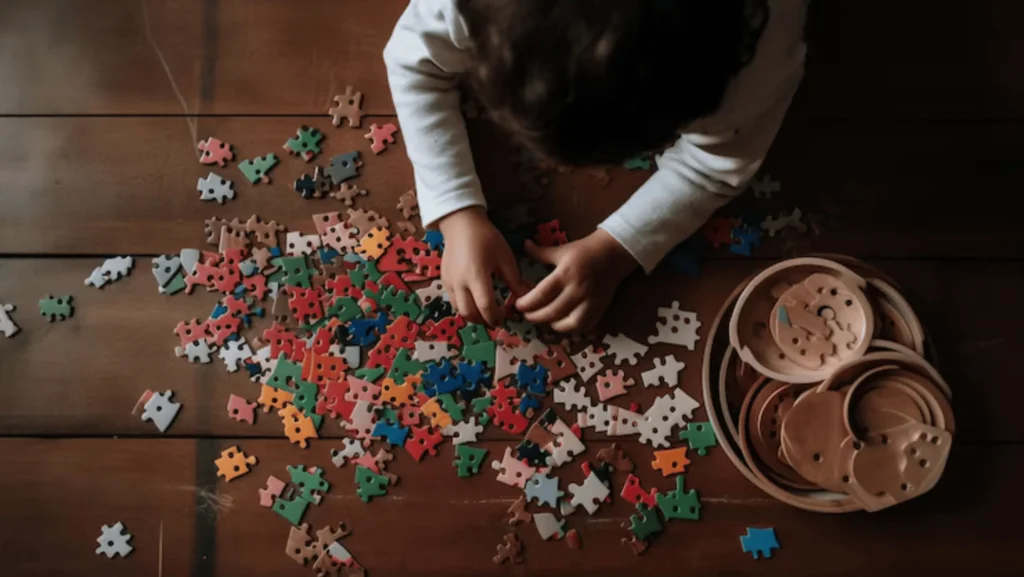Hi there, I’m Zara, a full-time working mom living in the bustling suburbs of the U.S., raising my energetic little boy who’s now a curious preschooler. Life is a daily blend of Zoom calls, spilled juice, laundry mountains, and the constant search for the right balance between being a professional and being “Mom.” One of my proudest (and most challenging) parenting goals has been helping my son build his fine motor skills — those tiny, magical movements that help with everything from holding a pencil to buttoning a shirt.
Let me tell you, it hasn’t always been smooth sailing. There were nights I stayed up Googling “easy fine motor skills activities” after a long workday, feeling guilty that I wasn’t doing enough. But over time, I learned that small, consistent efforts — even just 10 minutes a day — can make a huge difference.
So if you’re a working mom like me, trying to juggle it all while also supporting your child’s development, I see you. Let me walk you through what worked for us, how we made it fit into our schedule, and how I learned to give myself some grace along the way.

Why Fine Motor Skills Matter
Fine motor skills are all about the small muscle movements in our hands and fingers — think coloring, cutting with scissors, using utensils, or zipping up a coat. For toddlers and preschoolers, strengthening these skills is foundational for future academic and life success.
I first noticed my son was struggling when he had trouble stacking blocks or grasping a crayon properly. His preschool teacher mentioned it too, and while I tried not to panic, a wave of “mom guilt” definitely washed over me. That was my cue to start incorporating simple activities into our routine that didn’t feel like work — for either of us.
Quick and Fun Fine Motor Activities We Love
Here are some of the tried-and-true activities we did together, often while I prepped dinner or between meetings:
1. Sticker Play
I bought a few sticker books from the dollar store and kept them in a kitchen drawer. Peeling stickers is a great finger workout, and he loved creating sticker scenes while I cooked.
2. Threading Cheerios
We used pipe cleaners and threaded Cheerios onto them. It doubled as a snack-time activity and kept him occupied while building hand-eye coordination.
3. Playdough Time
On weekends or after bath time, we’d play with playdough. I’d give him cookie cutters, a rolling pin, and a plastic knife. We made “pizzas,” “snakes,” and even “worms with hats” — his idea, not mine!
4. Pom-Pom Sort
I grabbed some colored pom-poms and an ice cube tray. Using tweezers or his fingers, he’d sort them by color. We also played “feed the monster,” where he’d stuff pom-poms into a tissue box monster I decorated during a lunch break.
5. Water Painting
On warmer days, we’d go outside with a bucket of water and a paintbrush. He’d “paint” the fence or sidewalk. It felt like magic to him and was so easy to set up.
Fitting It All In: Time Management Hacks That Helped
I know what you’re thinking — When do I find the time for this? Trust me, I had that same thought. But I found that when I incorporated these activities into our existing routine, it became manageable.
- Morning boost: While waiting for my coffee to brew, we’d do a quick 5-minute sticker activity.
- Dinner prep = activity time: I set up a mini activity station at the kitchen table while I cooked.
- Weekend focus: Saturday mornings, we’d do two or three fun activities. No pressure, just fun.
- Bath toys count too! Squeezing sponges, filling cups, and pouring water are all great for motor development.
The trick is not to overhaul your day but to find those micro-moments and make them intentional.
Self-Care and the Myth of “Doing It All”
Let me get real for a second. There were days when I barely managed to keep my eyes open, let alone orchestrate a structured activity. And on those days, I reminded myself: it’s okay.
I started giving myself permission to not be perfect. I also began setting small boundaries — a 15-minute evening walk by myself, saying “no” to things that drained me, and letting screen time happen sometimes without beating myself up over it.
Because here’s the truth: we can’t pour from an empty cup. Prioritizing my own rest and sanity meant I had more energy and patience for my son when it really mattered.
Battling Mom Guilt (and Winning)
Oh, mom guilt. It creeps in when we’re working, when we’re tired, when we think we should be doing more. I battled it every time I chose work over play, or handed my son an iPad while I took a meeting.
But I’ve learned to challenge that guilt with gratitude. I remind myself:
- I’m working to provide for him.
- I’m modeling resilience and dedication.
- I’m not perfect — and that’s okay.
I’ve also stopped comparing myself to Instagram moms who seem to have it all figured out. My real life includes mismatched socks, cereal for dinner, and moments of pure joy amidst the chaos.

Tips for a Healthier Work-Life Balance
Here’s what helped me stay sane while raising a preschooler and managing work:
- Plan the night before: I’d set out one activity or prep materials in a small bin so mornings weren’t stressful.
- Create a “yes” space: I child-proofed a corner of our living room with toys, books, and art supplies so he could play safely while I worked nearby.
- Communicate with your partner or support system: My husband and I tag-teamed when possible, and when he traveled for work, I leaned on grandparents or a trusted sitter.
- Use tech wisely: I set calendar blocks for breaks to spend 10 minutes with my son throughout the workday.
- Celebrate the little wins: Every time he learned a new skill — like using scissors without help — we had a mini celebration. Even a high-five made him beam.
Lessons Learned Along the Way
What surprised me the most on this journey wasn’t how quickly my son picked up new skills, but how much I learned about myself. I discovered:
- Kids don’t need Pinterest-perfect activities — they need you.
- Being present, even for just 10 minutes, means more than a whole day of distracted time.
- You can support your child’s development even when life feels messy.
I also realized how important it was to trust my instincts. Some days, it’s okay to just snuggle up with a book or let them build towers out of cereal boxes. It all counts.
Mama, You Are Doing Enough
If you’re reading this and feeling overwhelmed, please hear me: You are doing enough. Whether you work from home, commute, run your own business, or manage your household — your love is showing up in ways your child will remember, even if they can’t articulate it.
Fine motor activities don’t have to be fancy or time-consuming. They just have to be consistent, joyful, and rooted in connection. Even five minutes a day is a gift.
So take a deep breath. You’re not alone in this. We’re all just figuring it out one sticker, one Cheerio, one bedtime story at a time.
You’ve got this, Mama.

